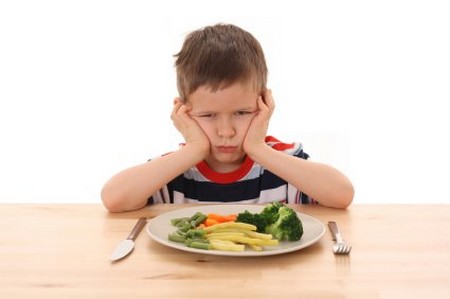A horse trainer knows that the right diet gives speed on the final furlong, but it doesn’t make a horse behave badly. A good diet prepares our children for the long run of life but, for most youngsters, it has no effect on behavior.
In about five per cent of all children diet affects their behavior, and their most common symptom is irritability or restlessness. There is a myth that diet only affects ADHD children but any child, whether ADHD or not, can show a behavioral change. A second myth suggests that the only food offenders are artificial colorings, preservatives and additives, but the evidence shows that organically grown oranges, tomatoes and pure honey can sometimes be just as troublesome.

There are four common groups of chemicals that cause food intolerance: salicylates, amines, and monosodium glutamate and food additives.
The salicylates are natural chemicals found in many fruits, vegetables, puts, herbs, spices and jams. Salicylates are highest in unripe fruits and there is more near the skin than inside.
The amines occur in high levels in cheese, chocolate, yeast extract and fruits such as bananas (especially when overripe).
Monosodium glutamate (MSG) occurs naturally in strong-flavored foods like tomatoes and cheeses and is also sometimes used as an additive in stock cubes, yeast extracts and some styles of cooking.
Food additives are either preservatives used to keep foods fresh or colorings to make them look more attractive. Hundreds of these are used but only a few are likely to cause trouble. A code number on the product label indicates which chemicals have been added, for example, sulphites are numbered between 220 and 228, while antioxidants are numbered 310 to 321.
In my experience, when there is sensitivity, parents are usually aware of the offending drink, food or fruit and give this a miss. But the situation can be much more complex where the effects of food chemicals are cumulative. For example, the natural preservative salicylate can come from a variety of sources. A child who is sensitive to it may eat first tomato paste, then some raisins, then peppermint and finally a glass of orange juice. In the cumulative child any two or three of these would have been no problem, but the total intake creates an overload. Parents are now confused as orange juice previously caused no reaction but today it has tipped the balance.
It takes a clever dietitian to untangle all this. If they suspect a natural or artificial product is affecting behavior they will withdraw it and then reintroduce it at a later time to see what happens.
Diet has a lesser effect on behavior than popular belief might suggest. Sugar is the target of much criticism but this has not been shown to cause behavioral problems. I rarely suggest the diet approach to behavior, but I support parents who want to give it a fair go. For them I recommend that the diet be supervised by a knowledgeable dietician.